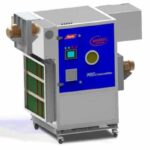
As far as medicolegal liability goes in emergency medicine, the spinal epidural abscess (SEA), along with other acute infectious spinal pathology (AISP), remains one of the big ones. Considering the missed diagnosis and opportunity for intervention that can occur with SEA can result in permanent disability, it is unsurprising that this is the domain of multimillion dollar settlements and jury awards. Prompt neurosurgical intervention is necessary to reduce the risk of progression, putting the onus on emergency physicians to make a timely diagnosis. Roughly speaking, through 2017, the average plaintiff award for filed cases in the VerdictSearch database was $5.2M, and this ranged all the way up to nearly $20M.1
These lawsuits illustrate the potential danger lurking within every seemingly benign patient with back pain. The classic triad of fever, pain, and neurologic deficit is absent in over three-quarters of cases. Some evidence suggests a bare majority may present even without neurologic deficit as a clue.2 This requires the diagnosis be considered in virtually every patient with back pain, although estimates place the prevalence of SEA at only around two to eight cases per 10,000 hospital admissions.
Whereas some “can’t miss” diagnoses have straightforward diagnostic pathways in the emergency department, SEA and other AISP are dramatically more challenging. A high-sensitivity troponin-I can be relied upon to aid in the diagnosis of an acute coronary syndrome. A CT pulmonary angiogram can be performed in a timely manner in virtually every ED. The best test for spinal pathology — magnetic resonance imaging — is slow, uncomfortable, and unsettling at best, while being unobtainable or unavailable in other scenarios.
To circumvent the limitations of MRI, much investigation has been pursued into non-specific inflammatory markers as surrogates for infection. Similar to the approach to septic arthritis, the most-explored biomarkers are erythrocyte sedimentation rate (ESR) and C-reactive protein (CRP). A host of retrospective studies, dating back to the 1990s, have evaluated these biomarkers in patients diagnosed with AISP. These studies are skewed by small samples and other limitations, but ESR and CRP are certainly elevated in advanced disease.
A new study published in JACEP Open investigates these two biomarkers in an attempt to better characterize their diagnostic capability. Building upon the few hundred patients included in prior work, this study expands the evaluation to several thousand patients collected from a multisite data warehouse. This retrospective study looked at four years of presentations to 2,000 sites of care associated with a single hospital network, then used ICD-10 codes to retrospectively identify candidate patients with presenting complaints potentially arising from AISP. Patients were then narrowed solely to those who had either ESR or CRP ordered and concluded evaluation with a subsequent MRI of the spine.
All told, a final study population was comprised of 2,004 patients with AISP and 4,198 in whom it was excluded. Approximately two-thirds of the identified cases were coded as discitis or vertebral osteomyelitis and 44 percent showed SEA. The authors performed a matched nearest-neighbor propensity score analysis to approximately even out their study populations, followed by a reporting of the diagnostic characteristics for each biomarker.
As should be overtly obvious even before examining this new publication, if these biomarkers were a universally reliable strategy, it already would be part of a validated clinical pathway in the emergency department. AISP has been long recognized as a sinister and insidious condition. These biomarkers, ESR and CRP, have been in existence for eons. There has been ample opportunity for these tools to work their way into practice.
First, the authors present the sensitivity and specificity of various cut-offs for each biomarker in isolation. For example, 90 percent sensitivity was achieved by an ESR of 20mm/h and a CRP of 1.2mg/dL. To achieve 95 percent sensitivity, the ESR cut point was 12mm/h and CRP was 0.7mg/dL. It is worth noting this CRP cut point is actually lower than the typically accepted abnormal threshold of 1.0mg/dL for this measurement.
However, by combining the two biomarkers, it was observed that a combination of both an ESR less than 20mm/h and a CRP less than 1.0mg/dL achieved 98.9 percent sensitivity at a specificity of 69.2 percent. Using the general prevalence of infectious spinal pathology as a reference, the authors present a negative predictive value of 99.9 percent off a negative likelihood ratio (LR) of 0.016.
This is an excellent negative LR and virtually excludes any patient from having infectious spinal pathology. The difficulty lies with two problematic aspects of these data. First, the authors have selected, effectively, a pristine population for their analysis. The patients included in their analysis — unlikely the wider emergency department population with undifferentiated back pain — could not have any other competing condition potentially raising their ESR or CRP. Then, these data inform us about the performance characteristics of these tests only in patients for whom AISP was pursued seriously enough to receive MRIs. This is such a narrow slice of the diverse assortment of presenting complaints for which AISP is a possibility.
The more important issue regarding incorporation into practice stems from the classic sacrifice of specificity for sensitivity. The specificity of these biomarkers is likely in the same range as a D-dimer, but with an even rarer underlying condition, and even more confounding competing conditions potentially affecting their measurement. The vast majority of patients with elevated ESR or CRP will not have AISP. Rather than decreasing the number of patients selected for MRI, unstructured use of these non-specific markers of inflammation assuredly will cause an increase in advanced imaging.
The path forward likely requires a larger movement to establish a standard of care in which a prudent evaluation is acceptable, with an allowable miss rate based on an agreed upon approach. A handful of risk-stratification instruments have been proposed, one of which requires a CRP. A combination of clinical risk stratification and inflammatory biomarker measurement may yet emerge as an effective tool in the diagnosis of AISP, but further work in this area is required.
As with all retrospective derivation of measurement thresholds, further validation is desirable. That said, these data have rough face validity and the combination of a normal ESR and CRP should exclude AISP. To prevent an excess of false positives and MRI, these tests should only be considered in, for example, a patient who would otherwise be referred to an MRI if these tests were not available. This is likely the only valid path incorporating biomarkers to exclude AISP without further increasing imaging utilization.
 Dr. Radecki (@emlitofnote) is an emergency physician and informatician with Christchurch Hospital in Christchurch, New Zealand. He is the Annals of Emergency Medicine podcast co-host and Journal Club editor.
Dr. Radecki (@emlitofnote) is an emergency physician and informatician with Christchurch Hospital in Christchurch, New Zealand. He is the Annals of Emergency Medicine podcast co-host and Journal Club editor.
- DePasse JM, Ruttiman R, Eltorai AEM, et al. Assessment of malpractice claims due to spinal epidural abscess. J Neurosurg Spine. 2017;27(4):476-480.
- Long B, Carlson J, Montrief T, Koyfman A. High risk and low prevalence diseases: Spinal epidural abscess. Am J Emerg Med. 2022;53:168-172.
- Gutovitz S, Blaskowsky J, Lindstrom D, et al. An assessment of c-reactive protein and erythrocyte sedimentation rate in ruling out acute infectious spinal pathology in emergency department patients: a retrospective cohort study. J Am Coll Emerg Physicians Open. 2025; July 11;6(4):100213.
- Shroyer SR, Davis WT, April MD, et al. A clinical prediction tool for MRI in emergency department patients with spinal infection. West J Emerg Med. 2021;22(5):1156-1166.
- Artenstein A, Friderici J, Visintainer P. A predictive model facilitates early
- recognition of spinal epidural abscess in adults. West J Emerg Med. 2018;Mar;19(2):276-281.









